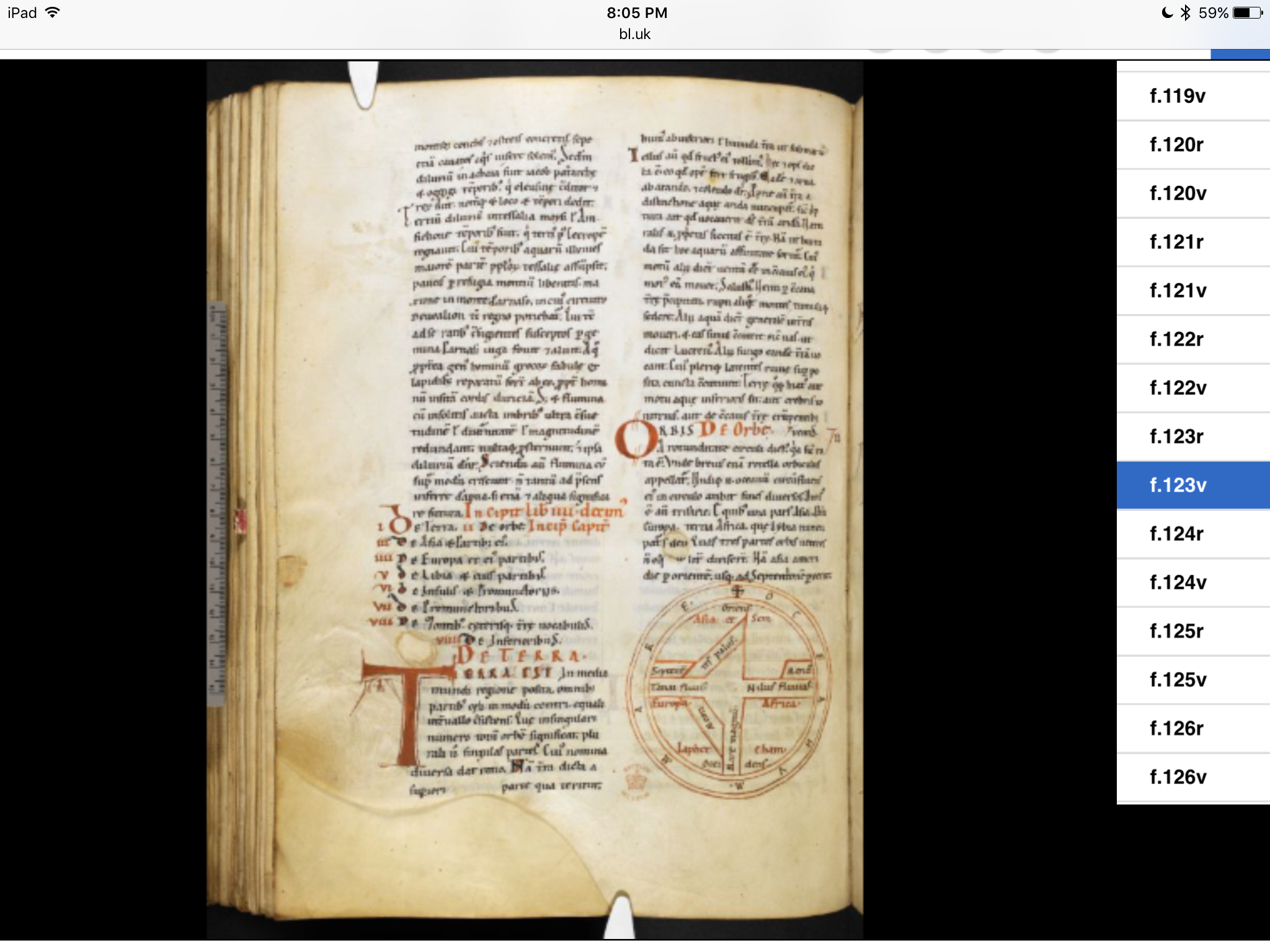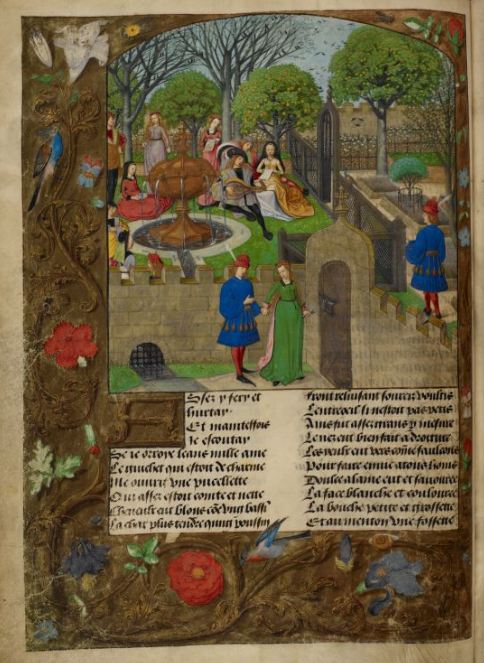GEOMETRY
- reading: psychometry / psychogeography / psychomachia, the multiplicity of impediments (ex. Wealth), Pygmalion, structure, (compositional) shape (Roman de la Rose 4-9, 44-45, 53-59, 154-158, 229-233, 236-245, 319-326)
- music in class this week:
Hildegard of Bingen, The Origin of Fire – Music and Visions (Anonymous 4) https://m.youtube.com/watch?v=Q8gK0_PgIgY
—, Canticles of Ecstasy (Sequentia) https://m.youtube.com/watch?v=Ei88J4lERbk
(attrib.) Alfonso X, Cantigas de Santa Maria (Sequentia) https://m.youtube.com/watch?v=56By5YVqP_0
TUESDAY
1 Discussion of blog questions & comments on week 7
2 Geometry and geography
- maps and mapping and visualisations
—early world maps
—T and O maps
—“12 Maps that Changed the World” The Atlantic - human external spatial relations, relationship to physical space,
—British Library Royal MS 14 C VII: Matthew Paris, mapping the journey from London to Jerusalem
—Hereford Mappa Mundi project
THURSDAY
1 Student presentation & class discussion
2 Geometry, geography, and geology
- human external spatial relations, relationship to physical space, environment:
—the idea of adventure and quest especially in romance; related, pilgrimage; distinction from exploration, discovery, and conquest
—British Library Royal MS 14 C VII: Matthew Paris, mapping the journey from London to Jerusalem
—Hereford Mappa Mundi project - human internal space:
—as a man-made imaginary construct and artificial creation
—psychomachia, psychometry, and psychology; the “minor” but instrumental characters:
Wealth, Poverty, Hunger (154-158)
Rebuff (“Resistance”; Dangiers), Shame, Evil Tongue, Fear (44-45)
those four guardians + Jealousy (53-59)
Rebuff , Fear, Shame (229-233)
Venus vs Shame & Fear (319-320)
On Dangiers: see People of Color in Medieval Art History > Roman de la Rose here and here - human artifice, artefacts, design, architecture, and art:
—reading (broad sense) man-made physical spaces in the Rose: the garden wall decorated with carved images (bas-relief sculpture) and painting (4-9): (L-R) Cruelty, Hate, Baseness, Covetousness, Avarice, Envy, Sorrow, Old Age, Religious Hypocrisy, Poverty
Inside, the art of textiles and fashion (10-20): the doorkeeper, Idleness; inside, birds, Pleasure & Joy, the God of Love & Pleasant Looks & Beauty, Wealth & her lover, Largesse & Arthurian knight, Generosity of Spirit & young man, Courtesy (the first to speak to the lover, 13) & knight, Youth & her lover
—the story of Pygmalion and Galatea, embedded within the description of another three-dimensional art-work, a tiny silver image-statue-reliquary (321-26);
which is also used as a device to bring “relics” and “pilgrimage” into the grand OTT mixed metaphor of the “conquest” of the “Rose”
Points to Ponder & sneak previews of next week:
- Looking at reliquaries, in association with Astronomy work of looking at astronomical instruments
- QUESTION TO CONSIDER: the story of Pygmalion, its relationship to Genius on creativity (vs Nature: see next week’s reading), and considering what the difference is between:
a stone-mason and a sculptor?
a carpenter and a carver?
a metal-worker or a smith and a jeweller (we can also discuss the interesting in-between-or-both case of goldsmith & silversmith)?
craft and art? - Art, psychogeography (see also: Rhetoric group notes), and ideas of making and finding, materials and sense, and making sense of and understanding:
ex. entendemen, Troubadour poetry about trobar, and the use of sens & matiere in prologues to Marie de France’s Lais and Fables and to some of Chrétien de Troyes’s romances
ex. in 20th c. plastic & visual arts: Barbara Hepworth, Henry Moore, Bill Reid, Kenojuak Ashevak, Louise Bourgeois
also Aristotle Poetics


